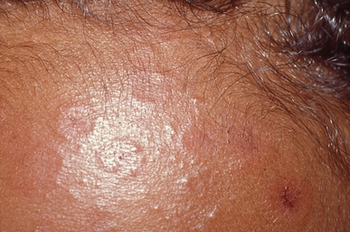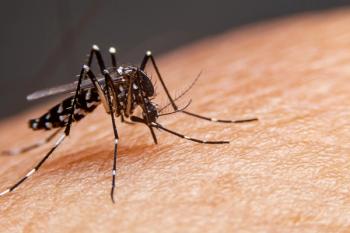
Octavio Ramilo, MD, joins us to discuss new clesrovimab phase 2b/3 study data presented at IDWeek 2024 in Los Angeles, California.

Octavio Ramilo, MD, joins us to discuss new clesrovimab phase 2b/3 study data presented at IDWeek 2024 in Los Angeles, California.

In a recent study, a decrease in opioid dispensing was observed among youths undergoing surgical procedures, but rates remained high enough to warrant additional action.

There were no treatment or RSV-related deaths during the study.

"The magnitude of benefit, trajectory of symptomatic improvement, and dependency on the number of treatment sessions showed a treatment effect similar to that found in adults," stated study authors.

The approved indication is for patients aged 7 years and up with narcolepsy to treat cataplexy or excessive daytime sleepiness.

GLP-1 receptor agonists are increasingly being used to treat obesity in adolescents.

Investigators sought to test the efficacy of the Promoting Resilience in Stress Management (PRISM) intervention on levels of HbA1c.

The ongoing challenges of mental health, artificial intelligence, and the addressing of social determinants of health are key themes of pediatric health care are topics of discussion with Matthew Davis, MD, FAAP in this video interview.

"Many of my patients with poorly controlled seizures have tried cannabidiols. Unfortunately, they have not been effective in these nonsyndromic epilepsies," said Jon Matthew Farber, MD.

Brittany Bruggeman, MD, emphasizes that many patients with type 1 diabetes are unaware of the availability of advanced technologies like CGMs and automated insulin delivery systems.

John Loiselle, MD, discusses careful pediatric exams, the growing use of ultrasound in emergency departments, and the rise of mental health cases affecting care.

Can you diagnose this month's dermatology case?

Parents had a variety of preferences and motivations for acquiring prognostic genetic information about their child, but 4 major findings emerged from parental interviews. Click to read more.

Approval is based on a study in 116 adult and pediatric male patients with either severe hemophilia A or severe hemophilia B, both without inhibitors.

Can you diagnose the patient in this edition of puzzler?

Overall, 2 doses of TAK-003 successfully induced the production of neutralizing antibodies against all 4 dengue serotypes in at least 90% of adults, children, and adolescents, regardless of whether they were seronegative or seropositive at baseline.

Trivalent seasonal influenza vaccines include 2 influenza A viruses (H1N1) and 1 influenza B virus.

Daily intervention intensity was not associated with significant effect sizes for any of the 4 intervention types, though technology-based interventions showed the largest positive association.

Brittany Bruggeman, MD, highlighted the ability to predict type 1 diabetes months to years in advance through islet autoantibodies, and how the pediatrician can play a role.

The FDA, CDC, and NIH have released a consensus statement regarding premature infant nutrition and necrotizing enterocolitis.

Contemporary Pediatrics' editor-in-chief Tina Tan, MD, FAAP, FIDSA, FPIDS, talks RSV immunization and the availability of prevention tools.

This decision marks the second time the FDA has issued a complete response letter (CRL) for dasiglucagon to treat hypoglycemia in patients 7 days and up with congenital hyperinsulinism.

Steven Selbst, MD, discusses a recent trend in emergency medicine where non-operative management of appendicitis is being considered as an alternative to traditional surgery.

While rates of exclusive breastfeeding have slightly increased between 2016 and 2022, they remain under the Healthy People 2030 goal.

Angela Chun, MEd, MD, FAAP, discusses common causes of pediatric joint pain, serious red flags, and the importance of timely diagnosis of conditions like JIA and silent uveitis.

In this article, Colleen Sloan explores key nutrition strategies that pediatricians can confidently share with families to help their young athletes perform at their best.

This week, take a look at several video interviews with experts from the 2024 AAP meetings, all in one place.

Kay Rhee, MD, discusses the challenges of pediatric obesity treatment, highlighting the role of biological and environmental factors, behavioral interventions, and the potential benefits of GLP-1 medications in weight management for children and teens.

At the 2024 AAP National Conference, Steven Selbst, MD, highlighted the rise in accidental THC ingestions among children, urging pediatricians to counsel parents on the dangers of improperly stored THC gummies that resemble candy.

Tanya Altmann, MD, discusses California's AB 899 law requiring baby food heavy metal testing, urging a balance between safety and maintaining nutrition quality.